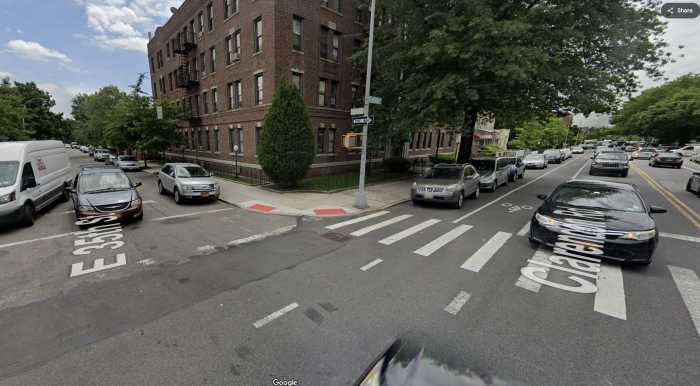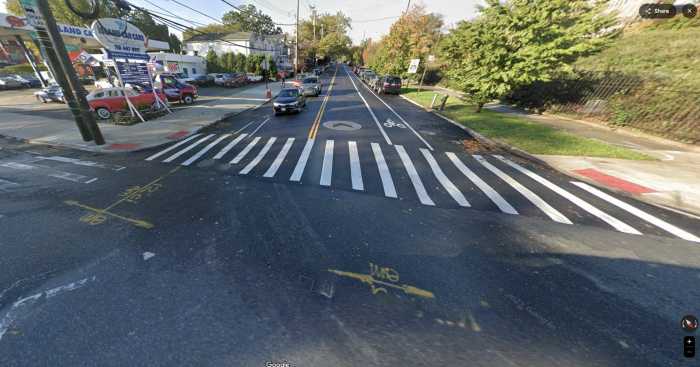When East New York resident Tola Lucas got on the A train headed for Kennedy Airport the day after Christmas last year, he was ready to board a long haul flight to Nigeria. But when the train pulled into the Grant Avenue station, it stopped and stood still for the better part of a half-hour — an all-too-familiar refrain for New Yorkers riding the subway.
"Long story short . . . I missed my flight and I had to pay a fee of $190 to get on the next flight, which did not leave until another four hours," said Lucas, 28. "It seems as if the MTA has no consideration of our lives. We pay to take the train and we also pay for the consequences when they [mess] up. I was livid.”
But Lucas is not alone. As the MTA holds townhalls and weighs how to pay for its proposed Fast Forward plan — a 10-year, $40 billion blueprint to revitalize the subways and buses — New Yorkers remain stuck, riding the trains and growing increasingly frustrated with the delays and seeming gridlock of the agency.
A representative with the MTA pointed out the agency’s NYC Transit Delay Verification System, which allows riders to request verification of subway delays within 90 days.
But Lower East Side resident Leah Grandoit won’t forget missing her sister’s high school graduation in June, stuck on an F train that sat still for at least 20 minutes.
"I was texting my family that I was on my way, but it took forever," said Grandoit, 20. "I missed her walking across the stage, it was horrible.
"It was frustrating sitting there when you know you have to be somewhere on time," she added. "She was like ‘I understand.’ We definitely had a good time at dinner, that was the only thing we could do."
Canarsie resident Ezekiel Harris, 25, was headed to a job interview for a security position in August when the 4 train stopped at Union Square for 20 minutes. There was train traffic ahead, Harris was told.
"When I finally got to the job site, they did not even let me do the interview because they said I was unreliable," Harris said. "I was about an hour late and now that I think about it, I should have just turned back around and went home.”
Film critic Joey Magidson, 31, also missed work last month, turning around and giving up on a screening.
"If everything goes according to plan, it works out to about two minutes a stop," said Magidson, of Brighton Beach, who added he turned around when he got to 34th Street after spending about 2 hours inching along on the B train. "I was not happy. It’s worse than I remember it ever being.
"There don’t seem to be good reasons, the train is just moving slowly," he added. "They’re going to want to either raise the fare or whatever excuse they want to use and nothing changes. Every time it’s gone up I haven’t noticed an improvement in service."
Medgar Evers student Breyanna Wright, 18, of Brownsville, was headed home at about 8:30 one recent night to submit an English class assignment that was due before midnight. But after a series of unfortunate train misadventures, Evers missed the deadline.
"I had already wrote it and all that was left was to type it up and submit it . . . [but] while going home, the train stopped and we had to get off and walk to Utica Ave to catch the other train," she said. "They did not tell us what happened or why they told us to get off the train. I ended up getting home super late. I missed the deadline and got a zero on my assignment.
"I think they need to be upgraded and be better in terms of delays and breakdowns," Wright added.
Subway service has gotten so bad for Tolani Adeboye, 41, of Bedford Stuyvesant, that the city worker has taken to walking or biking to work when possible. A turning point for her was a Wednesday from this past summer, when a cascade of delays on the G and A lines more than doubled her 30-minute commute into Manhattan and made her 40 minutes late to an 11 a.m. meeting with her boss.
Adeboye, who works at the city’s Department of Education and is a member of the transit advocacy group Riders Alliance, left her home expecting to be 20 minutes early to her job. She would take the G from the Myrtle-Willoughby Avenues station and transfer to the A at Hoyt-Schermerhorn to get to her job at the Chambers Street station, where she meets her boss usually at least once a week. But the countdown clocks on the G read her fate.
“I got down to the platform and could tell it was not good,” she said. “The countdown clocks were not giving reasonable information — trains were three minutes away, then 17 minutes away and then 40 minutes away.”
She checked her phone and saw that the A and C trains were also delayed. The Hoyt-Schermerhorn station platform was chaotic.
“It was five people deep on the platform. I thought, how am I going to [get] to lower Manhattan from here? Every train is going to be packed,” she said. “And worse than the delays was that we were not getting any information as to what was going on. Beyond the delays, which are really bad, is you can’t get an E.T.A. on a resolution for the delay.”
On most days, Adeboye works in Downtown Brooklyn, and is “privileged” enough to have the opportunity to walk to work in pleasant weather, she said. But that’s not the case for the roughly 19 people she manages. Train delays — from the MTA, PATH or Metro-North — can hobble productivity at her job, she said.
“We work different hours to accommodate our work-life balances,” she said, “but when there are transit delays, it can be an absolute nightmare to try and bring the team together as necessary.”
Riders Alliance published its own book of Subway Horror Stories in 2015 that appears to still be haunting its members — even after Gov. Andrew Cuomo declared a “state of emergency” at the MTA in the summer of 2017, and the implementation of the MTA’s Subway Action Plan. The group is now pushing for state lawmakers to pass congestion pricing in Manhattan as a way to raise more than $1 billion in annual MTA funding.
Shams Tarek, a spokesman for the MTA, touted the Subway Action Plan as a success in stabilizing service, and noted the more recently unveiled — and still unfunded — Fast Forward plan that outlines a 10-year blueprint to modernize subway, bus and paratransit service.
“The century-old subway system completes most of its 8,000 daily trips on time, but of course every delay has an impact on someone’s life, and no single delay is ever welcome," Tarek said in a statement. "While Transit workers have arrested last year’s decline in service with the Subway Action Plan, the Fast Forward Plan is the blueprint for the modern transit system New Yorkers need and deserve, starting with a complete replacement of the signal system, reliable new cars, and full accessibility.”


































